



Do you have a question about the DSC Power Series and is the answer not in the manual?
Describes the components of the security system, including the control panel and keypads.
Instructions for cleaning and maintaining security equipment using a damp cloth and dusting.
Procedure for arming the system, including indicator lights and sounds during the setting state.
Indicates system status after the exit delay, showing indicator lights and sound changes.
Function allowing users to exit premises after arming without disarming and rearming.
Notifies users of improper exit or failure to close the exit/entry door after arming.
Error tone when the system is unable to arm due to open sensors or incorrect code.
How to disarm the system using an access code, including entry delay warnings.
Error tone when an invalid disarm code is entered, requiring re-entry.
Arms perimeter while bypassing interior zones, with specific keypad indicators and sounds.
Procedure to arm interior zones selectively while in Stay Mode.
Silences keypad buzzer and doubles exit time for specific arming methods.
Using a wireless key (DSC WS4939) to arm and disarm the system.
Temporarily disabling zones for access or when a zone is out of service.
Step-by-step instructions for bypassing zones using the PK5500/LCD5500 keypad.
Procedure to reactivate all previously bypassed zones.
Recalls the last set of bypassed zones for re-application.
Programming and selecting groups of zones to bypass for convenience.
Using dedicated keys (F, A, P) to trigger Fire, Auxiliary, or Panic alarms.
Specific key sequences on LED5511/LCD5511 for alarm messages.
Differentiates between continuous (burglary) and pulsed (fire) alarm siren sounds.
How to handle and silence burglary alarms.
Immediate actions for fire alarms and accidental triggers.
How to identify and view system trouble conditions using keypad codes.
Acknowledging and overriding existing troubles to allow arming.
Procedure for programming up to 32 additional user access codes.
Details on User Codes, Master Code, and Supervisor Codes.
Default and programmable attributes that define code functionality.
Attributes like Arm/Disarm and Command Outputs that are fixed.
List of attributes that can be assigned to user codes for specific functions.
Attribute determining if an access code generates an arm/disarm beep.
Assigning access codes to specific partitions or areas of the system.
Key considerations and rules for programming and managing access codes.
Procedure for deleting an existing access code from the system.
Accessing master functions via a specific keypad command.
Setting the system's current time and date.
Enabling or disabling the automatic arming feature for partitions.
Programming the specific time of day for automatic system arming.
Initiating a test sequence for the keypad sounder, bell, and communicator.
Allowing remote access for installers via a timed service window.
Enabling the system to initiate a call for downloading computer connection.
Controlling audio input from an optional audio interface module.
Testing the system's audible alarms and keypad indicators for proper function.
User's responsibility for weekly system testing, excluding smoke detectors.
Activating individual detectors to verify their operation and status.
Installer-initiated mode to verify detector operation and notify the central station.
Preparing the system to receive downloading calls from installers.
Changing the language displayed on the keypad.
Setting the system's time and date via keypad commands.
Viewing a list of past alarm events and the sensors that triggered them.
Adjusting the brightness and contrast levels of the keypad display.
Adjusting the volume of the keypad buzzer to different levels.
Programming custom labels for zones, partitions, and command outputs.
Accessing and scrolling through the last 500 system events.
Displaying the status of up to 8 partitions on the keypad.
Resetting specific sensors after an alarm condition.
Describes the components of the security system, including the control panel and keypads.
Instructions for cleaning and maintaining security equipment using a damp cloth and dusting.
Procedure for arming the system, including indicator lights and sounds during the setting state.
Indicates system status after the exit delay, showing indicator lights and sound changes.
Function allowing users to exit premises after arming without disarming and rearming.
Notifies users of improper exit or failure to close the exit/entry door after arming.
Error tone when the system is unable to arm due to open sensors or incorrect code.
How to disarm the system using an access code, including entry delay warnings.
Error tone when an invalid disarm code is entered, requiring re-entry.
Arms perimeter while bypassing interior zones, with specific keypad indicators and sounds.
Procedure to arm interior zones selectively while in Stay Mode.
Silences keypad buzzer and doubles exit time for specific arming methods.
Using a wireless key (DSC WS4939) to arm and disarm the system.
Temporarily disabling zones for access or when a zone is out of service.
Step-by-step instructions for bypassing zones using the PK5500/LCD5500 keypad.
Procedure to reactivate all previously bypassed zones.
Recalls the last set of bypassed zones for re-application.
Programming and selecting groups of zones to bypass for convenience.
Using dedicated keys (F, A, P) to trigger Fire, Auxiliary, or Panic alarms.
Specific key sequences on LED5511/LCD5511 for alarm messages.
Differentiates between continuous (burglary) and pulsed (fire) alarm siren sounds.
How to handle and silence burglary alarms.
Immediate actions for fire alarms and accidental triggers.
How to identify and view system trouble conditions using keypad codes.
Acknowledging and overriding existing troubles to allow arming.
Procedure for programming up to 32 additional user access codes.
Details on User Codes, Master Code, and Supervisor Codes.
Default and programmable attributes that define code functionality.
Attributes like Arm/Disarm and Command Outputs that are fixed.
List of attributes that can be assigned to user codes for specific functions.
Attribute determining if an access code generates an arm/disarm beep.
Assigning access codes to specific partitions or areas of the system.
Key considerations and rules for programming and managing access codes.
Procedure for deleting an existing access code from the system.
Accessing master functions via a specific keypad command.
Setting the system's current time and date.
Enabling or disabling the automatic arming feature for partitions.
Programming the specific time of day for automatic system arming.
Initiating a test sequence for the keypad sounder, bell, and communicator.
Allowing remote access for installers via a timed service window.
Enabling the system to initiate a call for downloading computer connection.
Controlling audio input from an optional audio interface module.
Testing the system's audible alarms and keypad indicators for proper function.
User's responsibility for weekly system testing, excluding smoke detectors.
Activating individual detectors to verify their operation and status.
Installer-initiated mode to verify detector operation and notify the central station.
Preparing the system to receive downloading calls from installers.
Changing the language displayed on the keypad.
Setting the system's time and date via keypad commands.
Viewing a list of past alarm events and the sensors that triggered them.
Adjusting the brightness and contrast levels of the keypad display.
Adjusting the volume of the keypad buzzer to different levels.
Programming custom labels for zones, partitions, and command outputs.
Accessing and scrolling through the last 500 system events.
Displaying the status of up to 8 partitions on the keypad.
Resetting specific sensors after an alarm condition.
| Brand | DSC |
|---|---|
| Model | Power Series |
| Category | Security System |
| Language | English |

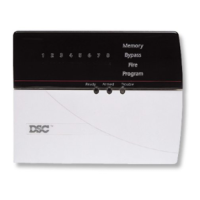

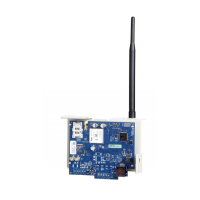
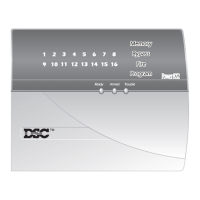
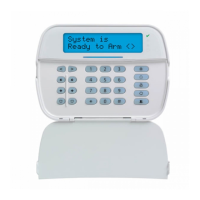

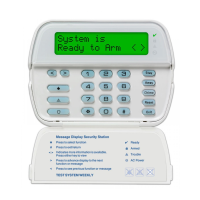

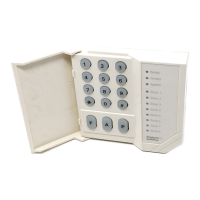
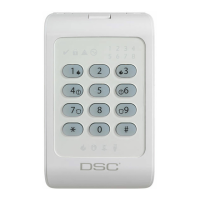

